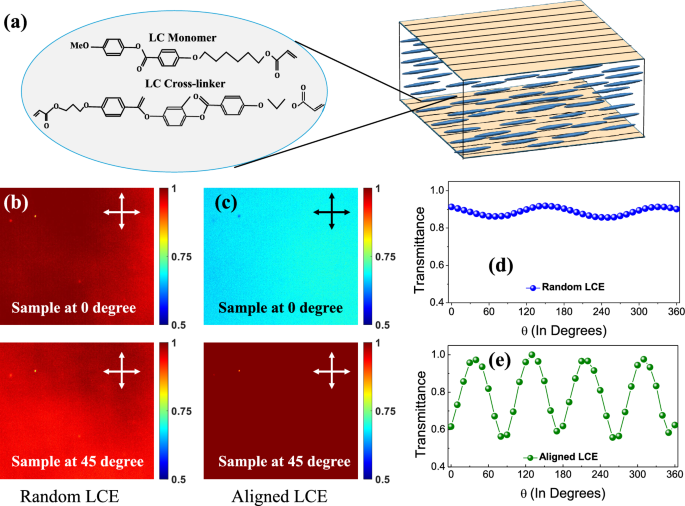A transverse spatially random monochromatic electric field vector, E(r,t), is composed of two mutually orthogonal polarization components \(\mathrm {E_i}\)(r,t) and \(\mathrm {E_j}\)(r,t) and represented as:
$$\begin{aligned} \textrm{E}(\textrm{r,t}) = \mathrm {E_{i}} (\textrm{r,t})\hat{\textrm{i}} + \mathrm {E_{j}} (\textrm{r, t})\hat{\textrm{j}}, \end{aligned}$$
(1)
where \({\hat{\textrm{i}}}\) and \({\hat{\textrm{j}}}\) are the unit orthogonal polarization vector components, \(\textrm{r}\) is the position vector on the observation plane, and \(\textrm{t}\) is time. The coherence-polarization matrix of an inhomogeneously polarized random field is given by:
$$\begin{aligned} \Gamma (r_1, r_2) = \begin{bmatrix} \langle \mathrm {E_i^*}(\mathrm {r_1}) \mathrm {E_i}(\mathrm {r_2}) \rangle & \langle \mathrm {E_i^*}(\mathrm {r_1}) \mathrm {E_j}(\mathrm {r_2}) \rangle \\ \langle \mathrm {E_j^*}(\mathrm {r_1}) \mathrm {E_i}(\mathrm {r_2}) \rangle & \langle \mathrm {E_j^*}(\mathrm {r_1}) \mathrm {E_j}(\mathrm {r_2}) \rangle \end{bmatrix}, \end{aligned}$$
where \(“\langle ~\rangle ”\) represents the ensemble average, and \(\mathrm {r_1}\) and \(\mathrm {r_2}\) are the two spatial position vectors on transverse plane. The mean intensity at position vector \(\textrm{r}\) is given by:
$$\begin{aligned} \langle \textrm{I}(\textrm{r}) \rangle = \langle |\mathrm {E_i}(\textrm{r})|^2 \rangle + \langle |\mathrm {E_j}(\textrm{r})|^2 \rangle = \text {tr} \, \Gamma (\textrm{r,r}). \end{aligned}$$
The normalized two-point intensity correlation function \(\gamma _\textrm{s}(\mathrm {r_1}, \mathrm {r_2})\) of a non-uniform Gaussian random field is characterized as:
$$\begin{aligned} \gamma _\textrm{s}^{2}(\mathrm {r_{1}}, \textrm{r}_{2}) = \frac{< \Delta \textrm{I}(\textrm{r}_1) \Delta \textrm{I}(\textrm{r}_2)>}{< \textrm{I}(\textrm{r}_1)><\textrm{I}(\textrm{r}_2)>}, \end{aligned}$$
(2)
where \(\Delta \textrm{I}(\textrm{r}) = \textrm{I}(\textrm{r}) – <\textrm{I}(\textrm{r})>\) is the spatial intensity fluctuation from its mean value and \(<\textrm{I}(\textrm{r})>\) is the average intensity at position \(\textrm{r}\). The degree of polarization \(\textrm{P}(\textrm{r})\) at point \(\textrm{r}\), is given by:
$$\begin{aligned} \mathrm {P^{2}}(\textrm{r})=2 \gamma _\textrm{s}^{2}(\textrm{r,r}) -1. \end{aligned}$$
(3)
If the spatial distribution of the polarization is completely random, i.e., \(|\mathrm {E_i}(\textrm{r})|^2=|\mathrm {E_j}(\textrm{r})|^2\) and \(\Gamma _\mathrm {{ij}}(\textrm{r,r}) = <\mathrm {E_i^*}(\textrm{r})\mathrm {E_j}(\textrm{r})>= 0\), \(\gamma _\textrm{s}^2(\textrm{r,r}) = 0.5\), and degree of polarization \(\textrm{P}(\textrm{r}) = 0\). For a fully coherent random field, \(\gamma _\textrm{s}^2(\textrm{r,r}) = 1\) and the degree of polarization, \(\mathrm P(r)=1\). The random monochromatic electric field \(\textrm{E}(\textrm{r})\) after passing through a polarizer with a pass-axis oriented at an angle \({\theta }\) w.r.t. the x-axis, is:
$$\begin{aligned} \mathrm {E_P}(\textrm{r}) = [ \textrm{cos}^{2}\theta \mathrm {E_i}(\textrm{r}) + \textrm{sin}\theta \textrm{cos}\theta \mathrm {E_j}((\textrm{r}) ] \hat{\textrm{i}} + [ \textrm{sin}\theta \textrm{cos}\theta \mathrm {E_i}(\textrm{r}) + \textrm{sin}^{2} \theta \mathrm {E_j}(\textrm{r}) ]\hat{\textrm{j}} \end{aligned}$$
(4)
The intensity, \(\textrm{I}\), and the average intensity, \(<\textrm{I}(\textrm{r})>\), of field, \(\mathrm {E_P}(\textrm{r})\), can be written as
$$\begin{aligned} & \textrm{I} = \textrm{cos}^2\theta \textrm{E}_\textrm{i}\textrm{E}_\textrm{i}^* + \textrm{sin}\theta \textrm{cos}\theta \textrm{E}_\textrm{i}^*\textrm{E}_\textrm{j} + \textrm{sin}\theta \textrm{cos}\theta \textrm{E}_\textrm{i}\textrm{E}_\textrm{j}^* + \textrm{sin}^2\theta \textrm{E}_\textrm{j}\textrm{E}_\textrm{j}^*, \end{aligned}$$
(5)
$$\begin{aligned} & <\textrm{I}>= \textrm{cos}^2\theta \Gamma _{\textrm{ii}}+\textrm{sin}\theta \textrm{cos}\theta \Gamma _{\textrm{ij}}+\textrm{sin}\theta \textrm{cos}\theta \Gamma _{\textrm{ji}} + \textrm{sin}^2\theta \Gamma _{\textrm{jj}}, \end{aligned}$$
(6)
where \(\Gamma _{\textrm{ij}}\) are the element of the coherence-polarization matrix of the random field, E(r, t), and are defined as
$$\begin{aligned} \Gamma _{\textrm{ij}}(\textrm{r}_1,\textrm{r}_2) = <\textrm{E}_\textrm{i}^*(\textrm{r}_1)\textrm{E}_\textrm{j}(\textrm{r}_2)>. \end{aligned}$$
Assuming that the speckle field follows the Gaussian statistics, the cross-correlation between two speckle patterns, recorded for the pass-axis of the polarizer at \({\theta _1}\) and \({\theta _2}\), is calculated by:
$$\begin{aligned} < \Delta \textrm{I}(\textrm{r}_1) \Delta \textrm{I}(\textrm{r}_2)> = (\textrm{cos}\theta _1 \textrm{cos}\theta _2\Gamma _{\textrm{ii}}+\textrm{cos}\theta _1 \textrm{sin}\theta _2\Gamma _{\textrm{ij}}+\textrm{sin}\theta _1 \textrm{cos}\theta _2\Gamma _{\textrm{ji}}+\textrm{sin}\theta _1 \textrm{sin}\theta _2 \Gamma _{\textrm{jj}})^2 \end{aligned}$$
(7)
where \(\Delta I(r_i)= I(r_i)- \) represents the intensity fluctuation from its means value. The normalized cross-correlation is expressed by:
$$\begin{aligned} \gamma _\textrm{c}^{2}(\textrm{r}_{1}, \textrm{r}_{2}) = \frac{< \Delta \textrm{I}(\textrm{r}_1) \Delta \textrm{I}(\textrm{r}_2)>}{\sigma (\textrm{r}_1)\sigma (\textrm{r}_2)}, \end{aligned}$$
(8)
where \(\sigma (\textrm{r}_\textrm{i}) = \textrm{cos}^2\theta _\textrm{i} \Gamma _{\textrm{ii}}+\textrm{sin}\theta _\textrm{i} \textrm{cos}\theta _\textrm{i}\Gamma _{\textrm{ij}}+\textrm{sin}\theta _\textrm{i} \textrm{cos}\theta _\textrm{i} \Gamma _{\textrm{ji}} + \textrm{sin}^2\theta _\textrm{i} \Gamma _{\textrm{jj}}\) is the ensemble average.

